
Wine
Dream Vertical: Andrew Thomas
Winemaker Andrew Thomas has forged a name as one of the Hunter Valley’s most talented producers by sticking to the region’s two most acclaimed varieties.
The Hunter Valley is Australia’s oldest wine region, defined by names that have contributed to its history. Since 1832, the likes of Busby, O’Shea, Tyrrell, Drayton, Wilkinson and Tulloch have, through their wines, stitched their names into the fabric of the region, becoming an unchangeable part of its identity and character.
Some of these names are still at it, vintage by vintage, using what each growing season throws at them to make wines that not only define their place in the future of the Valley, but also connect the people that drink them to it.
None of this is lost on Andrew Thomas who, since 97, has been focussed on producing the two varieties that together characterise the Hunter Valley above any other region in the world: Shiraz and Semillon.
To the Valley
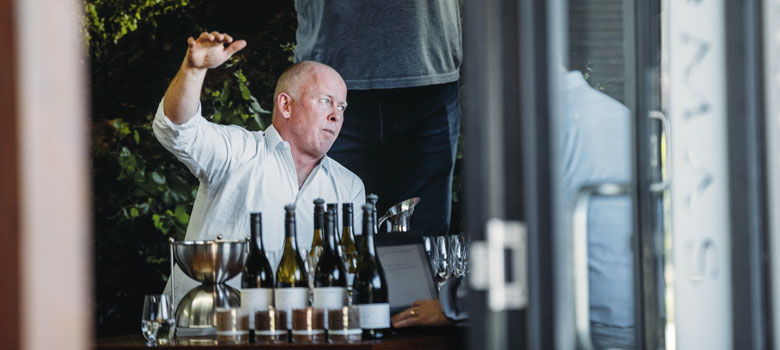
Andrew or ‘Thommo’ as he is known around Pokolbin, has wine in his DNA. He grew up in McLaren Vale, his father Wayne was a highly regarded winemaker, having worked with Peter Lehmann before going on to establish his own McLaren Vale label in the 70s.
But wine wasn’t initially on Andrew’s radar. “I grew up amongst wines and vines, but going through school I wasn’t really determined to be a winemaker,” he recalls. “My interest in the early days was music, but my lightbulb moment for wine was when I realised that I was actually bad at music.
“It was the realisation that you have to be exceptional to be a success in any industry. I realised that most of my friends and family were in the wine industry and whilst it’s a lot a hard work, it’s about a lifestyle; we are producing something that’s all about hospitality and I had seen that my whole life. I thought it was a really great option, so I made the decision to go and work and experience the lifestyle before I invested three years studying winemaking at university.”
Thommo ended up going to Roseworthy and on work experience found himself in the Hunter working vintage for Murray Tyrrell.
“I worked my backside off for those few weeks,” recounts Andrew. “And after I finished my degree, they called and offered me the position of assistant winemaker. I thought that this would be a great start to my career, so I moved to the Valley with no long-term plans, but that was now 34 years ago.”
Andrew spent 13 years at Tyrrell’s and in 1997 decided to start his own label focussed specifically on Shiraz and Semillon.
A Focussed Decision
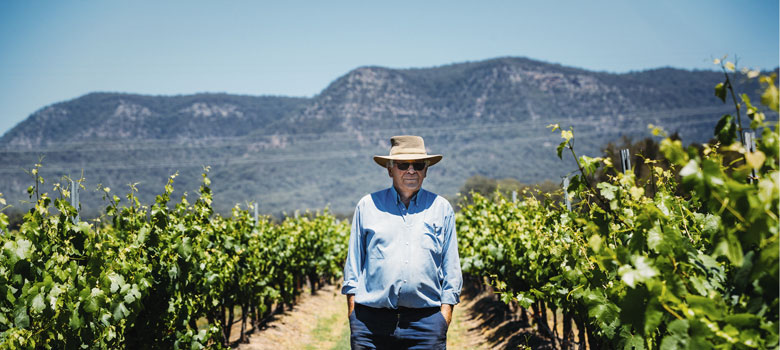
Pictured above: Viticulturist Ken Bray in his namesake vineyard, Braemore.
When it comes to personality, Andrew Thomas has loads. He comes across as a convivial, knock-about bloke with a larrikin streak, but the decision to start his business with a focus on two singular varieties explains much about what
lies beneath.
“I made a very conscious decision when I started out to focus on the signature varieties of the Hunter,” he explains. “That was going to be my point of difference.”
“Out of the 140 producers in the Hunter, I was the only one just purely focussing on these two. Of course everyone, except for Lakes Folly, will have a Semillon and a Shiraz in their range, but they spread their production across other varieties and styles, which gives them greater market reach.
“My view, from the very early days, was that I wanted to focus more on long-term quality and integrity over short-term commercial compromise.”
Style and Substance
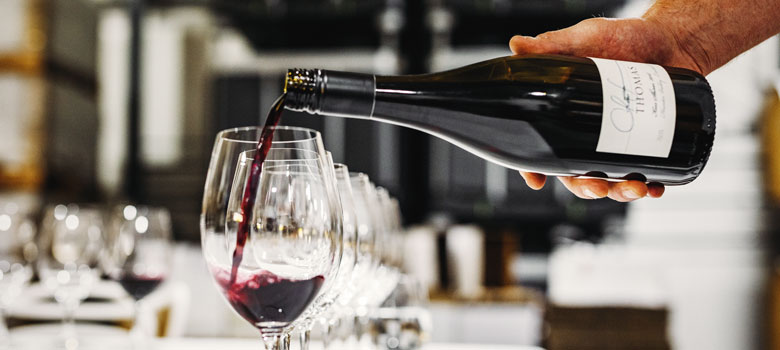
At the time Thommo was leaving Tyrrell’s, the wines of the Hunter Valley were going through a period of identity flux. Producers were looking to other regions to broaden the commercial appeal of their portfolio, everyone was wrestling with the dent that New Zealand Sauvignon Blanc was making on white wine sales, and Shiraz was going through a Robert Parker inspired, ‘bigger is best’ phase with loads of oak and jammy fruit.
From a stylistic perspective, this shift was taking the Hunter away from what had defined it in the past and arguably what it does best, so making a conscious decision to go in the opposite direction would not have been easy.
“I didn’t want to be ‘something for everyone,’” Andrew says, frankly. “It was very important to me, I wanted to make the wines that I believed in and I knew that in the long term, quality would prevail.
“Focussing on the signature varieties of the Hunter is at the core of my business, in the beginning it was a little bit counter intuitive as an approach, but I was happy if I could produce the right sort of quality, as I knew that quality would get recognised out in the marketplace.”
The Fruits of Labour
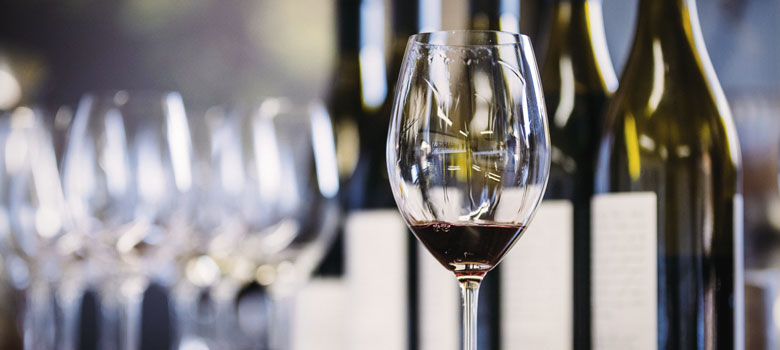
As counter intuitive as Andrew’s decision may have seemed in the late 90s, it’s clear that his long-term radar was in fine working order, having won Hunter Winemaker of the Year in 2008 and again in 2014. His wine show trophy list is extensive, and critics from across the country use adjectives such as ‘exquisite’, ‘sophisticated’ and ‘impeccable’ to describe his wines.
At a recent tasting with Andrew at his Hunter Valley home, it was obvious that this praise is well founded and having sampled across his Semillon and Shiraz flagship labels, ‘Braemore’ and ‘Kiss’, as well as his middle and entry wines, it is clear that his wines are now among the benchmarks of the region.
Semillon
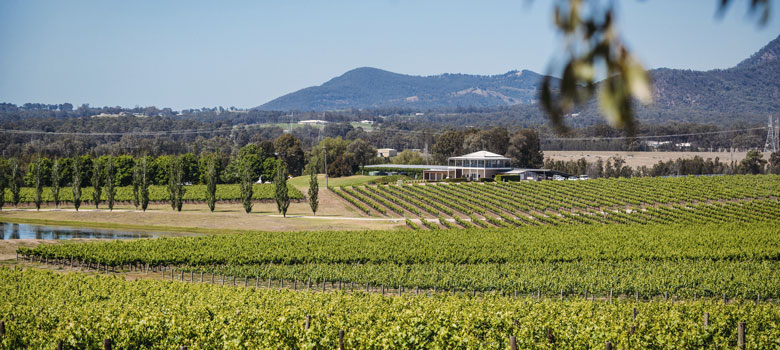
Pictured above: The view from the Thomas Cellar Door to Mount View.
Andrew’s Semillon range is not large, but the stylistic breadth is. The ‘Synergy’ label was a generous starting point; designed to appeal, it is stuffed with fleshy red and green apples seasoned with lemon skins and a soft profile that is miles away from the high acid ghost of young Hunter Semillon past.
‘Fordwich Hill’ and ‘The OC’ fill the middle of the range, displaying an appealing breadth of soil and vineyard diversity.
Both wines have classic Hunter Semillon aromatics with limes, apples and sandy minerals, but the ‘OC’ then diverges, showing classic citric complexity and tension, while the ‘Fordwich’ offers white flowers and a soft, gentle frame.
‘Braemore’, however, rules, and from the earlier vintages of 01/03 and even 06, through to the ‘good’ and difficult vintages, the pedigree of this vineyard shines through with purity, character and poise. Stylistically, Braemore is a contemporary Hunter Semillon with perfect natural acitity, texture and depth as a young wine, but still has the tightly wound frame to go the distance. Favourites were the 06 for its regal poise, the 14 for its weightless and creamy fruit and the 19 for its potential.
Shiraz
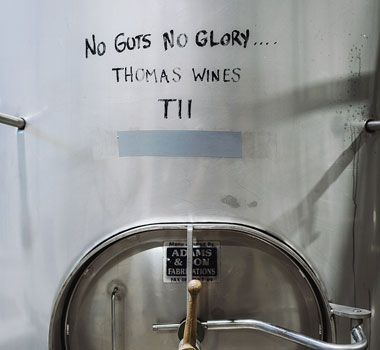
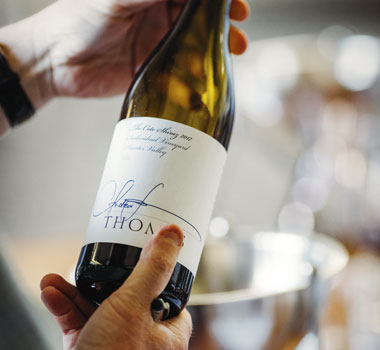
Pictured above (from left to right): Thomas winery ferment tank, where the magic happens; Label inspection.
Even for someone who was reared on McLaren Vale Shiraz, it’s clear that Andrew Thomas has a clear and personal position on what Hunter Valley Shiraz is.
From the ‘Synergy’ with its round yet generous frame, fine texture and crunchy fruit, to the tight, fine and glossy mouth feel of the ‘Déjà Vu’, to the dense, concentrated dry red style of ‘The Cote’, and the juicy, elegant and glossy ‘The Dam Block’, there is a weight and purity to these single site expressions that can only be Hunter.
Thommo’s ‘Kiss’ collection, while at the fuller end of the medium bodied range, only reinforces what separates Hunter Shiraz from the rest of the country; medium weighted, savoury fruited and textured wines with vibrant, built-to-last fruit.
Like Breamore, Kiss is now a regional benchmark and if the 05 is any indication of its potential, the future is bright.
As for the future, even though it’s only been 22 years, it’s hard to picture the Hunter Valley without Andrew Thomas and his range of special wines.